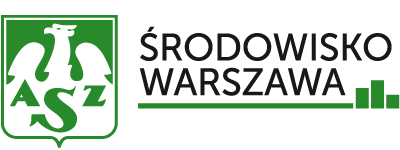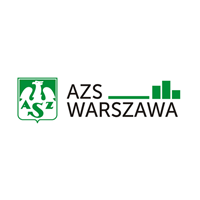Władze AZS Warszawa w kadencji 2020-2024
PREZES AZS WARSZAWA
Prof. zw. dr hab. Marek Konopczyński
ZARZĄD AZS WARSZAWA
Michał Bernardelli
Jerzy Chrzanowski
Rafał Jachimiak
Jacek Kasprzyk
Dariusz Piekut
Saturnin Przybylski
Grzegorz Pszczoła
Agnieszka Sikorska-Szyplińska
Artur Słomka
Anna Sobianek
Michał Starczewski
Mariusz Walczak
Olaf Weker
ŚRODOWISKOWA KOMISJA REWIZYJNA
Magdalena Wielgosz – Przewodnicząca
Wiesława Chmura
Małgorzata Stachurska
Anna Tacikowska
ŚRODOWISKOWY SĄD KOLEŻEŃSKI
Magdalena Hołownia – Broniatowska
Jan Broniatowski
Robert Gawkowski
STATUT AZS WARSZAWA
HISTORIA
AZS powstał w Warszawie już wiosną 1916 r. ale aż do uzyskania przez Polskę niepodległości nie mógł działać jako jednolita struktura zrzeszająca wszystkich studentów. Na przeszkodzie stała decyzja niemieckich władz okupacyjnych bojących się studenckiej organizacji działającej na wszystkich warszawskich uczelniach. Do 1918 roku działały więc w Warszawie: Uniwersytecki Związek Sportowy, Związek Sportowy Słuchaczów Politechniki, Związek Sportowy Wyższej Szkoły Handlowej i Związek Sportowy Koła Rolników Wyższej Szkoły Rolniczej. Do formalnego połączenia doszło jesienią 1919 r.
W dwudziestoleciu międzywojennym, AZS Warszawa zrzeszający ponad 2500 studentów był największym klubem w Polsce. Od 1927 r. związek posiadał swój stadion malowniczo położony w Parku Skaryszewskim, oraz przystań nad Wisłą i salę gimnastyczną w akademiku przy pl. Narutowicza. Stanowił potęgę sportową w takich dyscyplinach jak: wioślarstwo, pływanie, lekkoatletyka, gry sportowe (siatkówka, piłka ręczna, koszykówka), hokej, łyżwiarstwo.
Prawdziwym asem była lekkoatletka Halina Konopacka, zdobywczyni pierwszego złotego medalu dla Polski na Igrzyskach Olimpijskich w 1928 r.

W czasie wojny, niektóre sekcje kontynuowały nielegalnie swoją działalność organizując konspiracyjne rozgrywki i zawody (siatkarze, pływacy). Wielu sportowców wojny nie przeżyło, a do najbardziej bohaterskich należał pływak, sławny „Agent nr 1” czyli Jerzy Iwanow Szajnowicz.
Po wojnie, na skutek politycznych przemian, związek przekształcono w Akademickie Zrzeszenie Sportowe, ale skrót nazwy – AZS- pozostał ten sam. Na początku lat 50-tych, powstały kola sportowe na poszczególnych uczelniach, dające początek klubom uczelnianym, oraz (już w 1949 r.) wyczynowy AZS AWF. Kluby Uczelniane przynależały do Zarządu Środowiskowego AZS, który to zarząd stał się centralą wszystkich akademickich ośrodków Warszawy.
Po 1956 AZS odzyskał swą niezależność oraz dawną nazwę- Akademicki Związek Sportowy. Od 1963 r. Zarząd Środowiskowy w oparciu o Kluby Uczelniane organizuje spartakiadę dla studentów lat pierwszych – Varsoviadę, będącą jedynym w swoim rodzaju prawdziwym „świętem sportu akademickiego”. Dziś warszawskie kluby AZS pielęgnują tak bogatą tradycję, skutecznie propagując hasło „w zdrowym ciele zdrowy duch”. W blisko 30 klubach AZS w Warszawie jest zrzeszonych prawie 8500 studentów-sportowców.


